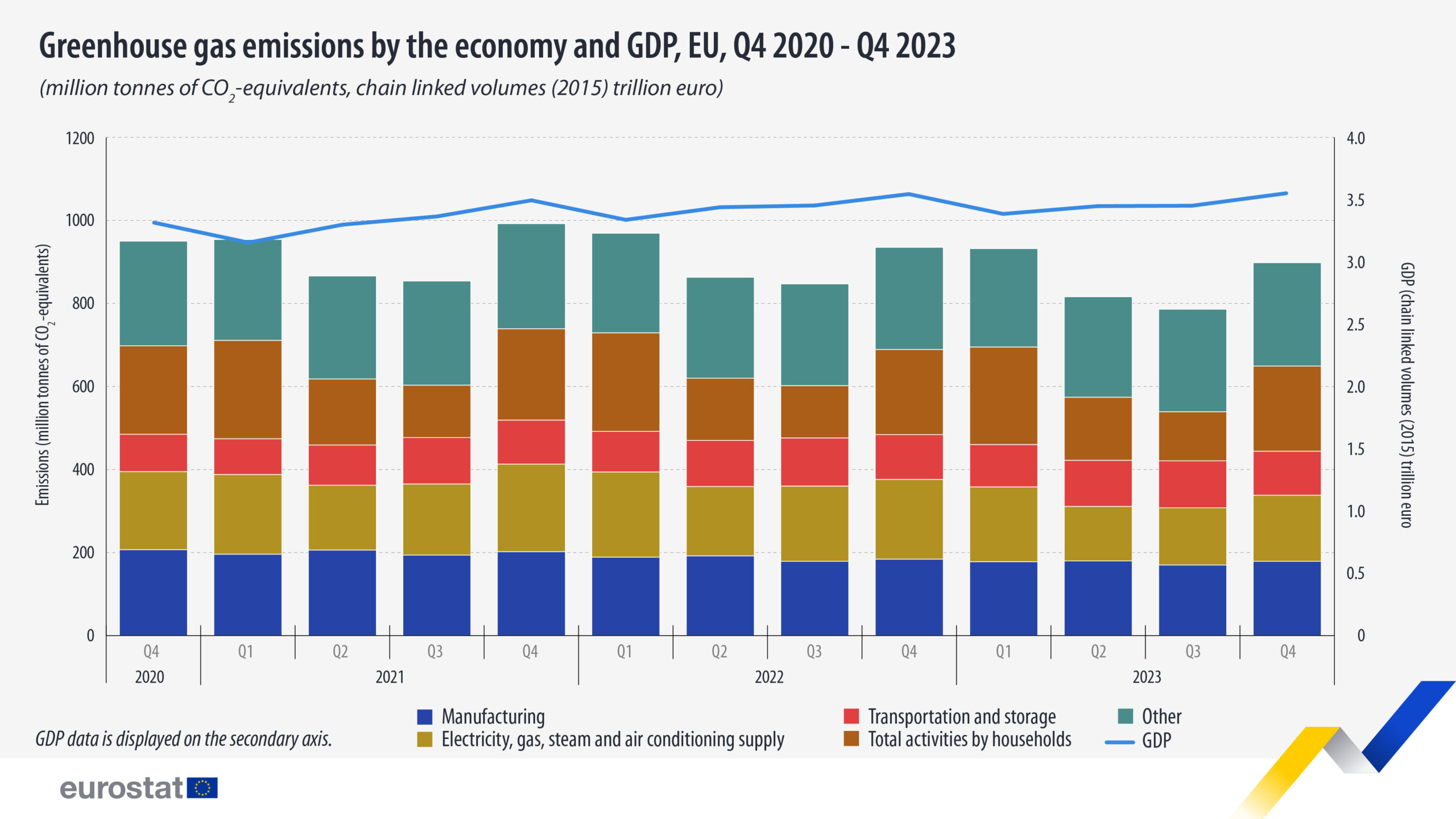The EU’s gross domestic product (GDP) remained stable, registering just a small increase (0.2% in the fourth quarter of 2023, compared with the same quarter of 2022).
This information comes from data on quarterly estimates for greenhouse gas emissions by economic activity published by Eurostat today.
In the fourth quarter of 2023, the economic sectors responsible for the largest reductions compared with the fourth quarter of 2022 were electricity and gas supply (- 17.2%) and manufacturing (-3.1%). Emissions by households remained almost stable.
In the fourth quarter of 2023, greenhouse gas emissions are estimated to have decreased in 22 EU countries, when compared with the same quarter of 2022.
The largest reductions in greenhouse gases are estimated for Estonia (-23.0%), Bulgaria (-17.0%) and Finland (-9.0%).
Out of the 22 EU members who are estimated to have decreased their emissions, 10 also recorded a decline in their GDP (Estonia, Finland, Sweden, Germany, Austria, Ireland, Latvia, Lithuania, The Netherlands, and Luxembourg). Hungary maintained the GDP at the same level while decreasing emissions. The other 11 EU countries (Bulgaria, Belgium, Czechia, Denmark, Italy, Spain, France, Poland, Portugal, Romania, and Croatia) are estimated to have managed to decrease emissions while growing their GDP.
Increases in emissions are estimated for Malta (+7.7%), Slovenia (+5.6%), Cyprus (+2.3%), Slovakia (1.7%) and Greece (+0.3%). Simultaneously, all 5 recorded a GDP increase: Malta (+4.3%), Slovenia (+2.2%), Cyprus (+2.1%), Slovakia (+2.2%) and Greece (+1.1%).










